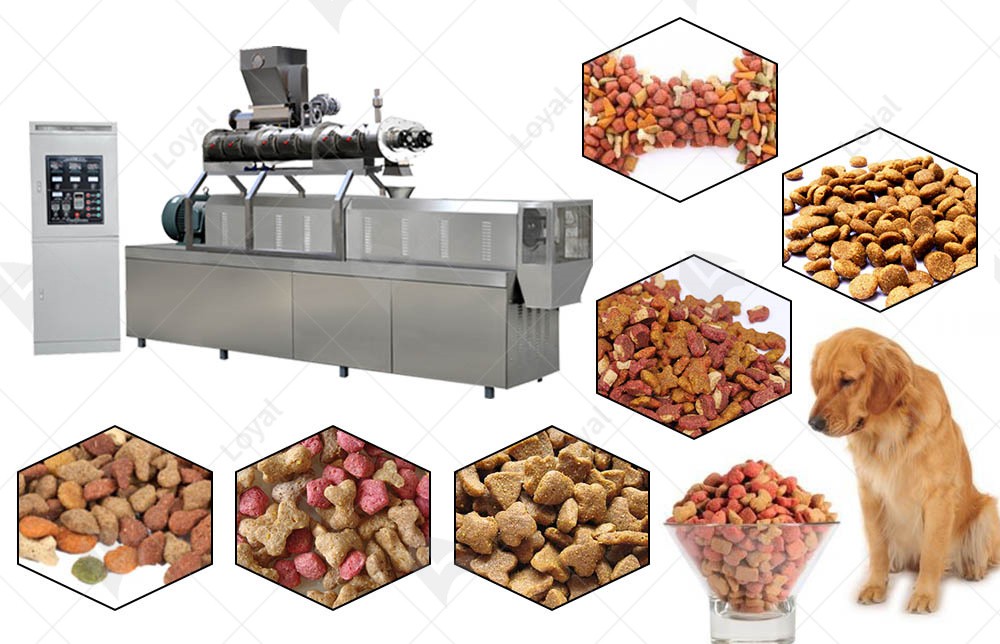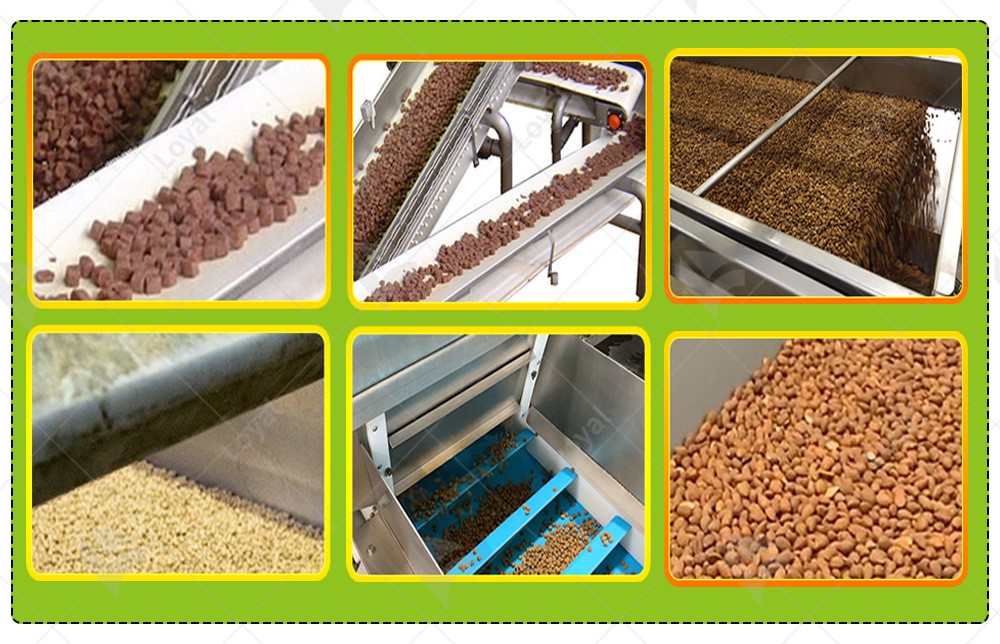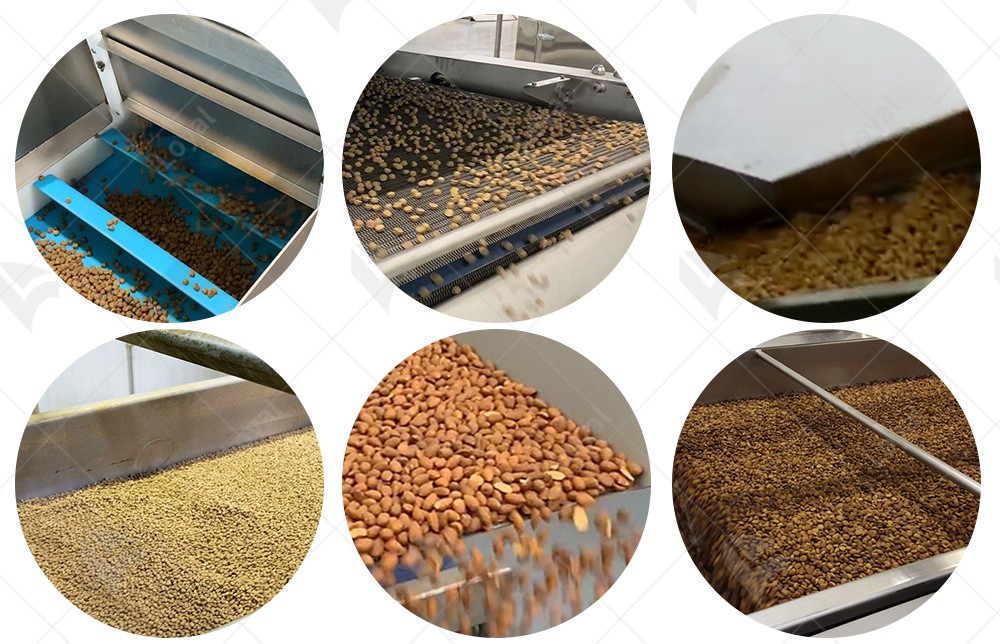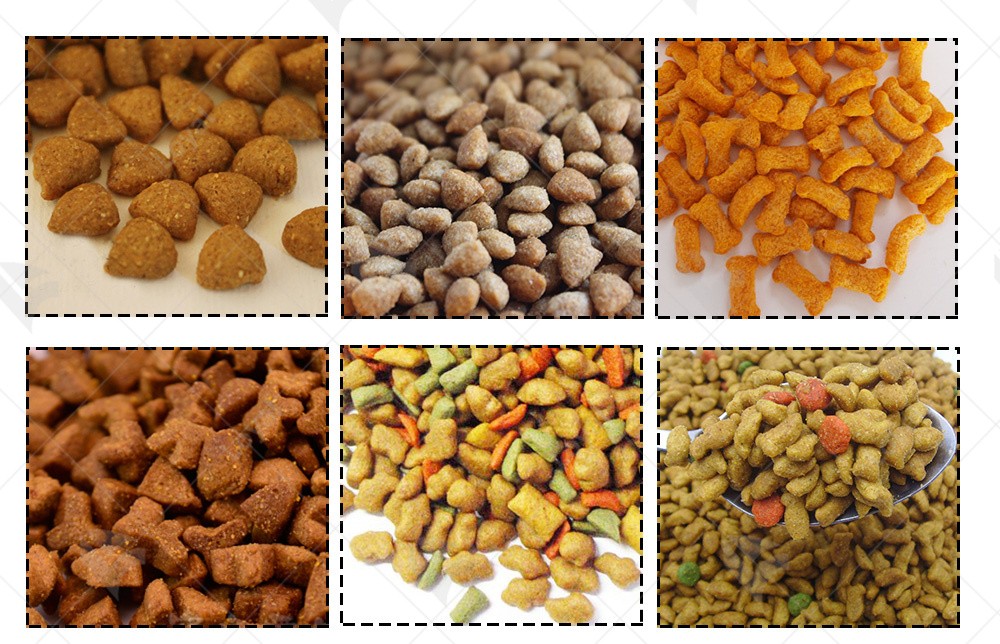Everything You Need To Know About animal food production line
The Rise of Automation in Food Production Industries
In recent years, the food production industry has undergone a significant transformation, driven largely by the rise of automation. This trend is particularly evident in the realm of animal feed production, where fully automated, high-efficiency lines are revolutionizing the way we produce and distribute feed for livestock.
The impetus for this shift towards automation can be traced back to several key factors. Firstly, the growing global demand for animal-based products, such as meat, milk, and eggs, has placed immense pressure on food producers to increase their output while maintaining quality and safety standards. Automation offers a solution to this challenge by enabling producers to streamline their processes, reduce labor costs, and enhance overall efficiency.
Moreover, advancements in technology have made automation more accessible and affordable for food producers of all sizes. From sophisticated robotic systems to advanced software algorithms, the tools and technologies available today enable producers to automate a wide range of tasks, from ingredient mixing and extrusion to packaging and distribution.
In the context of animal feed production, automation has proven to be a game-changer. By automating the production line, producers can ensure that every batch of feed is produced to exacting specifications, with consistent quality and nutritional content. This not only improves the health and well-being of the animals consuming the feed but also enhances the quality of the final products derived from them.
Furthermore, automation in animal feed production has led to significant improvements in hygiene and food safety. Automated systems are designed to minimize human error and contamination, ensuring that the feed produced is safe for consumption. This is particularly important in light of the increasing global focus on food safety and the need to prevent foodborne illnesses.
As the food production industry continues to evolve, it is clear that automation will play an increasingly important role in shaping the future of animal feed production. By embracing automation, producers can streamline their processes, improve efficiency, and enhance the quality and safety of their products. In doing so, they will be well-positioned to meet the growing demands of a rapidly changing global market.

Significance of High-Efficiency Animal Food Production Lines
In the realm of animal feed production, the adoption of fully automated, high-efficiency lines represents a significant milestone towards optimizing the entire process. As the demand for animal-based products continues to rise globally, the need for efficient and cost-effective production methods becomes increasingly pressing. High-efficiency animal food production lines play a pivotal role in meeting this demand, offering numerous benefits that extend beyond mere productivity gains.
1.High-efficiency production lines significantly reduce the time required to produce animal feed. By automating key processes such as ingredient mixing, extrusion, and cutting, these lines enable producers to increase their output without compromising on quality. This not only helps meet the escalating demand for animal feed but also allows producers to allocate their resources more effectively, potentially reducing waste and improving profitability.
2.The precision and consistency offered by automated production lines are paramount to ensuring the nutritional quality of the feed. Automated systems are programmed to mix ingredients in precise ratios, ensuring that every batch of feed meets the required nutritional standards. This consistency is crucial for maintaining the health and well-being of the animals consuming the feed, ultimately leading to better-quality animal products for consumers.
3.High-efficiency production lines contribute to enhanced food safety practices. Automated systems minimize human intervention, thereby reducing the risk of contamination and error. This is particularly important in the food production industry, where even minor deviations from safety protocols can have severe consequences. By automating key processes, producers can ensure that their feed products meet the highest standards of hygiene and safety.
4.High-efficiency animal food production lines facilitate better resource utilization. Automated systems can optimize the use of raw materials, water, and energy, leading to reduced waste and a smaller environmental footprint. This is in line with the growing global trend towards sustainable food production, which emphasizes the need to minimize the environmental impact of our food systems.

Boosting Efficiency with Automation in Animal Food Production Lines
In the realm of animal food production, the pursuit of efficiency is paramount. One of the most transformative technologies in this regard is the integration of fully automated, high-efficiency animal food production lines. These systems not only enhance productivity but also ensure consistency, precision, and cost-effectiveness throughout the entire production cycle.
The Benefits of Automation in Animal Feed Production
At the heart of boosting efficiency lies automation. By automating key processes within the animal food production line, manufacturers can significantly reduce the reliance on manual labor, thereby eliminating human error and increasing throughput. Automated systems are designed to perform repetitive tasks with unparalleled accuracy and speed, ensuring that every batch of feed meets the highest quality standards.
|
Streamlining Production Processes |
One of the primary ways automation boosts efficiency in animal feed production is by streamlining production processes. From ingredient handling and mixing to extrusion, drying, and packaging, automated systems handle each step with precision and efficiency. This not only reduces the time required for each process but also minimizes the need for manual intervention, allowing for a more seamless and continuous flow of production. |
|
Real-Time Monitoring and Control |
Another key advantage of automated animal food production lines is their ability to provide real-time monitoring and control. Advanced sensors and control systems integrated into these systems enable producers to track production parameters in real-time, including temperature, humidity, and ingredient ratios. This data can be analyzed to identify areas for improvement and optimize the production process accordingly. With real-time monitoring, producers can quickly address any issues that arise, minimizing downtime and ensuring that production runs smoothly. |
|
Reduced Waste and Improved Quality |
Automation also plays a crucial role in reducing waste and improving the overall quality of animal feed. By precisely controlling ingredient ratios and production parameters, automated systems can minimize the risk of over- or under-mixing, ensuring that each batch of feed is consistent and of the highest quality. Furthermore, automated packaging systems can accurately portion and seal feed bags, reducing the risk of spillage and contamination during transportation and storage. |
|
Scalability and Flexibility |
As animal feed production demands fluctuate, automated systems offer scalability and flexibility that traditional methods cannot match. Automated production lines can be easily adjusted to accommodate changes in production volumes, allowing producers to ramp up or down as needed. This flexibility ensures that producers can meet market demands efficiently and cost-effectively, without compromising on quality or efficiency. |

Energy Savings and Sustainability in Animal Food Production Lines
In today's environmentally conscious world, energy savings and sustainability are becoming increasingly important considerations for animal food production lines.
|
Energy-Efficient Design |
One of the key factors driving energy savings in animal food production lines is the incorporation of energy-efficient designs. Modern automated systems are engineered to minimize energy loss during production processes, utilizing advanced technologies such as variable frequency drives (VFDs) and efficient motors. These technologies enable precise control over power usage, reducing energy consumption and associated costs. |
|
Optimized Process Control |
Fully automated systems offer precise process control, which can significantly contribute to energy savings. By optimizing production parameters such as temperature, humidity, and ingredient ratios, automated systems can minimize the amount of energy required to achieve desired outcomes. Additionally, real-time monitoring and control capabilities enable producers to identify and address any energy inefficiencies promptly, ensuring that production runs smoothly and efficiently. |
|
Waste Reduction and Recycling |
Another crucial aspect of sustainability in animal food production lines is waste reduction and recycling. Automated systems can significantly reduce waste by ensuring precise ingredient handling and accurate portioning. This not only minimizes the amount of feed that goes to waste but also reduces the environmental impact associated with disposal. Furthermore, many modern animal food production lines incorporate recycling systems for waste materials, such as packaging and by-products, further promoting sustainability. |
|
Sustainable Raw Materials |
Sourcing sustainable raw materials is also essential for promoting sustainability in animal food production. Automated systems can be designed to work with a wide range of ingredients, including those sourced from sustainable sources. By partnering with suppliers who prioritize environmental responsibility, producers can ensure that their animal food production lines contribute positively to the environment. |
|
Long-Term Cost Savings |
While the initial investment in fully automated, high-efficiency animal food production lines may be significant, the long-term cost savings associated with energy savings and sustainability make them a worthwhile investment. By reducing energy consumption, minimizing waste, and promoting sustainable practices, producers can enjoy significant savings over the life of their systems. These savings can be reinvested in further improvements and innovations, ensuring that production remains efficient and sustainable. |

Challenges and Considerations
Streamlining animal feed production through the adoption of fully automated, high-efficiency lines presents numerous advantages, yet it also comes with its fair share of challenges and considerations.
1.Initial Investment and Cost Recovery
One of the primary challenges faced by producers is the significant initial investment required to implement fully automated, high-efficiency animal food production lines. These systems often involve cutting-edge technology, advanced equipment, and specialized installation services, which can be costly. Consequently, producers must carefully consider their financial situation and ensure that they have a clear plan for cost recovery over the long term.
2.Technical Expertise and Training
Fully automated systems demand a high level of technical expertise to operate and maintain. Producers must invest in training their workforce to ensure that they have the necessary skills to effectively utilize the new technology. This includes training on equipment operation, troubleshooting, and maintenance. Additionally, as technology evolves, ongoing training becomes necessary to stay up-to-date with the latest advancements.
3.Integration with Existing Processes
In many cases, producers seeking to streamline their animal feed production must integrate fully automated systems into existing processes. This can be a complex task, requiring careful planning and execution. Producers must consider factors such as compatibility with existing equipment, changes to production workflows, and potential disruptions to daily operations during the transition period.
4.Flexibility and Scalability
Another important consideration is the flexibility and scalability of fully automated, high-efficiency lines. As market demands and production needs evolve, producers must ensure that their systems can adapt accordingly. This includes the ability to adjust production volumes, incorporate new ingredients, and accommodate changes in product formulations. Flexibility and scalability are crucial for maintaining competitiveness and meeting customer needs.
5.Regulatory Compliance
Finally, producers must ensure that their fully automated systems comply with all relevant regulatory requirements. This includes adhering to food safety standards, ensuring proper labeling and traceability, and maintaining accurate records. Compliance with regulations is essential for maintaining consumer trust and avoiding costly fines or legal issues.

Future Trends and Innovations in Streamlining Animal Feed Production with Fully Automated, High-Efficiency Lines
As the animal food production industry continues to evolve, fully automated, high-efficiency lines are poised to drive significant changes and innovations in the coming years.
|
Increased Use of Artificial Intelligence and Machine Learning |
One of the most promising trends in fully automated animal feed production lines is the increased use of artificial intelligence (AI) and machine learning (ML). These technologies enable systems to learn from data, optimize production processes, and predict outcomes with unprecedented accuracy. For example, AI-powered systems can analyze ingredient quality, adjust formulations in real-time, and optimize production schedules to minimize waste and maximize efficiency. |
|
Greater Connectivity and Data Integration |
Another key trend is the increasing connectivity and integration of data across different aspects of animal feed production. Fully automated systems will become more intertwined with enterprise resource planning (ERP) systems, supply chain management tools, and other software solutions. This integration will enable producers to make data-driven decisions, track production performance, and respond quickly to market changes. |
|
Sustainability and Environmental Concerns |
Sustainability and environmental concerns are also driving innovations in fully automated animal feed production lines. Producers are seeking ways to reduce their carbon footprint, minimize waste, and use resources more efficiently. This has led to the development of new technologies that optimize energy consumption, reduce water usage, and promote the use of renewable and sustainable materials in production equipment. |
|
Precision Agriculture and Personalized Nutrition |
The integration of precision agriculture principles into animal feed production is another exciting trend. By collecting data on animal health, behavior, and performance, producers can create personalized nutrition plans that optimize animal growth and health outcomes. Fully automated lines can incorporate this data to adjust formulations and production processes on an individual basis, ensuring that each animal receives the optimal blend of nutrients. |
|
Autonomous Operations and Remote Monitoring |
fully automated animal feed production lines will continue to move towards greater autonomy and remote monitoring capabilities. This includes the use of robots, drones, and other autonomous vehicles to perform tasks such as ingredient handling, mixing, and packaging. Remote monitoring tools will enable producers to oversee operations from anywhere in the world, providing real-time insights into production performance and enabling quick responses to any issues that arise. |

Reference
The following are five authoritative foreign literature websites in the field of Industrial food machinery:
1. Food Engineering Magazine
Website: https://www.foodengineeringmag.com/
2.Food Processing Magazine
Website: https://www.foodprocessing.com/
3.Journal of Food Engineering
Website:https://www.journals.elsevier.com/journal-of-food-engineering
4. Food Manufacturing Magazine
Website:https://www.foodmanufacturing.com/
5. International Journal of Food Science & Technology
Website:https://onlinelibrary.wiley.com/